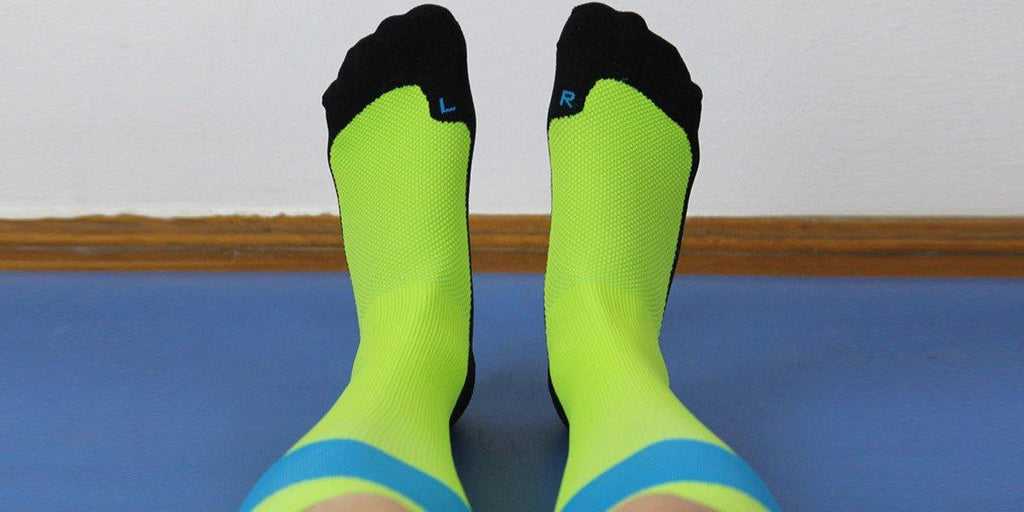Blog

How to Breathe When Running
When running, it’s important to pay attention to how you breathe so that you feed your muscles with enough oxygen to run faster and longer. Here are a few tips to help you breathe properly for greater running efficiency and performance.
Diaphragmatic vs Shallow Breathing
Start by making sure you’re not in the habit of shallow breathing. You can distinguish the difference between shallow breathing and diaphragmatic breathing by watching your chest and stomach. Your stomach moves with your breath when you’re breathing with your diaphragm, while your chest will move up and down if you’re shallow breathing.
Breathing Technique
Instead of breathing in through your nose and out through your mouth, try your best to use both your nose and mouth to breathe in and out. This helps maximize the amount of oxygen in your lungs and muscles at any given time. Practice this technique when you’re not running to be better prepared during your next run.
Talk Test
If you have difficulty saying more than a few words at a time while running, then you’re either running too fast or you’re not breathing properly. Keep in mind that the optimal intensity level of your run should allow you to maintain a conversation.
Train Your Muscles
The strength of your diaphragm directly relates to your ability to consume enough oxygen during your long runs. To train your diaphragm, simply lay on your back and breathe deeply allowing your belly to rise while you inhale. Practicing this technique on a daily basis will improve your lung capacity and ability to breathe while running.

Staying Hydrated Before, During and After a Run
Running, especially during the warmer summer months, can cause severe dehydration if you’re not careful. Our bodies lose water as we sweat to keep cool during excessive physical exertion. Fortunately, there are a few ways to stay hydrated no matter how long you plan to run.
Before Your Run
Did you know that you can overhydrate yourself? Before running a race or even going for a long run during training, sip on a bottle of water. The key is to not down a whole bottle at once, but take frequent sips until you feel hydrated. Drinking too much at one time can leave you lethargic and can even cause problems for the body.
During Your Run
While running, you can easily use a handheld water bottle or hydration belt to carry water on your run. It’s important to know that you only really need to drink when you’re thirsty. Our bodies are intelligent and will sound the alarm when we’re in need of fluid. Simply carry some water with you or plan your running route near a park to include a water break at the drinking fountain.
After Your Run
Weighing yourself before and after a long run will help determine how much fluid was lost. The general rule is to drink up to 24 ounces of water or a sports drink for each pound lost. This will help prevent sore muscles and stiffness. When going to the washroom after your run, check to see that your urine is a pale yellow color. You’ll need to keep hydrating your body if your urine is too dark.
Be sure to give your body the fluid it needs to perform its best by using these hydration tips for your next run.

Athletic Compression Socks Review
There are many compression brands in the market, but a few stand out above the rest. As a new company, we’re always asked how we compare with the bigger brands. We’ve done our homework and know that we’re up against some great companies.
Most people think we’re not supposed to talk about the competition, but who says we have to be like everyone else? Our rebellious spirit drives us to do things differently and we’re definitely not afraid to challenge the status quo.
Here’s a list of five well-known compression brands:
CEP Compression
Remember when Meb Keflezighi won the 2014 Boston Marathon? He did so wearing CEP compression socks. Imagine all the buzz that created for CEP! CEP is a sports brand of medi GmbH & Co. KG, with their head office in Germany. Besides Meb, CEP sponsors a few other high profile athletes, including Josh Cox and Andy Potts.
The CEP Compression Run 2.0 Socks worn by Meb have a compression rating of 20–30 mmHg and retail for $60 per pair.
PRO Compression
The PRO Compression Marathon socks are quite popular and come in a variety of colors. These socks are priced at $50 per pair and have a compression rating of 22–26 mmHg. Aside from socks, PRO Compression sells other compression gear such as sleeves, leggings and tights.
Sigvaris
Sigvaris is a Swiss company with over 1400 employees around the world. They started making medical compression stockings in 1958 and expanded to the sports line in 2009. The Sigvaris Sports Performance Compression socks are priced at $70 and with a compression rating of 20–30 mmHg.
Zensah
The name “Zensah” is based on the Italian word “Senza” which means to be “without”. The Zensah Tech+ Compression Socks have a 15–20 mmHg rating and sell for $50 per pair. Zensah also sells other compression products such as sleeves, shirts and tights.
2XU
2XU is a multinational corporation based in Australia. They sell a range of compression products that include socks, sleeves, shirts and tights. The 2XU Performance Run Compression Socks have a compression rating of 25–30 mmHg and retail for $50. Cait Snow, Ricky James and Ted Ligety are a few of the professional athletes sponsored by 2XU.
These are just a few of the more popular compression brands in the market. The key to finding the right pair of athletic compression socks is knowing how much compression support you need, as well as your ankle and calf circumference for proper sizing.
